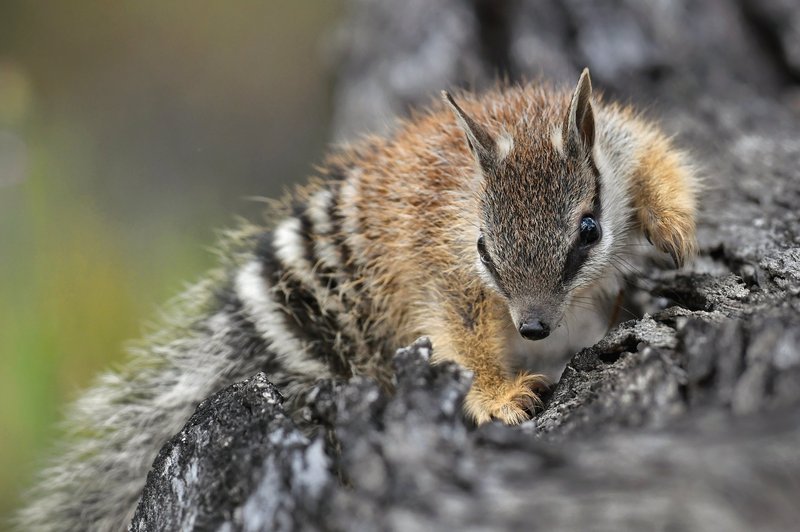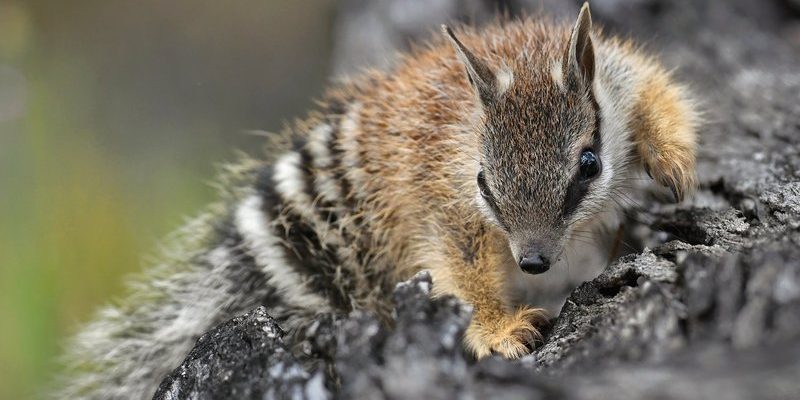
Now, imagine being a numbat parent. You don’t have a cozy house or the luxury of a crib. Instead, you navigate a harsh environment filled with predators and challenges. It’s a tough job, but numbats have evolved some incredible strategies to keep their little ones safe. Let me explain how these adorable creatures manage parenthood in their natural habitat.
Understanding Numbat Habits and Environment
Before diving into how numbats raise their young, it’s important to understand their habitat and daily habits. Numbats primarily live in wooded areas of southwestern Australia, where they can find plenty of food—mainly termites. These animals are nocturnal, which means they are more active at night. By foraging during the cooler hours, they avoid many daytime predators, which helps ensure the safety of their young.
The environment where numbats thrive is crucial for their survival. They need a habitat that provides shelter and food. Dense vegetation offers hiding spots from predators while abundant termite mounds supply their diet. Just like how we choose safe neighborhoods for our families, numbats select their homes carefully!
Breeding Season and Mating
Numbats mate during the warmer months—typically from late spring to early summer. During this time, males will compete for the attention of females. It’s kind of like dating for them; the males show off their strength and stamina by sparring with each other. Once a female chooses her mate, they have a brief courtship before mating.
What’s unique here is the brief gestation period. Female numbats carry their young for only about 11 days—much shorter than many other marsupials! After this quick gestation, she gives birth to up to four tiny, hairless babies. They’re not much bigger than a jellybean at birth and are completely dependent on their mother.
Finding a Safe Space
After giving birth, the mother numbat has to find a safe spot for her young ones. This usually means retreating into a hollow log or a dense thicket where they can be concealed from predators. Here’s the thing: safety is paramount. Numbats often change their location to avoid being found.
Inside their cozy hideaway, the babies latch onto their mother’s teats, which provide them with the nutrients they need to grow. These first few weeks are critical because their survival hinges on keeping warm and safe while they develop.
Mother’s Care and Feeding
Once the babies are born, the mother plays a crucial role in their development. For the first few months, she stays close to her young, keeping an eye out for danger. Numbat mothers are dedicated caregivers. They don’t just nurse their babies; they also teach them how to forage for food.
As the young numbats grow, around seven weeks old, they start to venture out of the nest. This is when they begin to imitate their mother’s behavior, learning how to hunt for termites. It’s a bit like showing kids how to cook—at first, they might just watch, but soon they’ll try it out for themselves.
Weaning and Independence
Weaning time for young numbats happens around five months of age. At this point, they still hang around their mother but begin to take solid food. The mother continues to show them where to find termites, guiding them as they explore.
During this period, the young numbats become more independent. They practice their skills, digging into termite mounds and learning to find food on their own. They’ll often stay close to their mother for support, but gradually, they gain confidence. The transition to independence is crucial, as it prepares them for life in the wild.
Vulnerability and Challenges
Raising young numbats isn’t without its challenges. The population of these delightful marsupials has been declining due to habitat loss and predation by introduced species like foxes and feral cats. As a mother numbat, it can be a daily struggle to protect her young from these threats.
Young numbats are particularly vulnerable during their first few months. Their main defense is finding a safe cover and learning quickly to hide and forage. This is why their mother’s guidance is so vital. Honestly, it takes a village—even in the wild!
Conservation Efforts and Supporting Numbats
Understanding the challenges numbats face is key to their conservation. Efforts to protect their habitats and limit predator populations are crucial for ensuring that future generations of numbats can thrive. Organizations work to restore wooded areas and create safe spaces for these animals.
As wildlife enthusiasts, supporting conservation programs can be as simple as spreading awareness or participating in local efforts. Every little bit helps when it comes to protecting the environments that numbats and other creatures depend on.
Numbats may be small, but their parenting skills and the challenges they face are mighty. From the moment they give birth to navigating the wild with their young, these creatures display resilience and dedication. The next time you think about how numbats raise their young in the wild, remember the complexities and hardships involved.
We can all learn a thing or two from their nurturing ways and the importance of supporting wildlife conservation. So, the next time someone mentions the adorable numbat, you can share just how amazing their family dynamics are!

